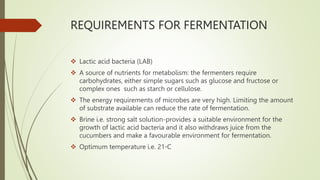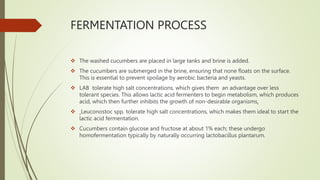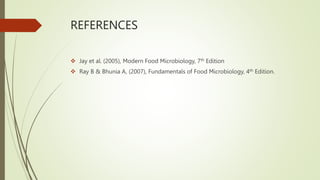The document discusses the fermentation process for cucumbers to produce pickles using the brine process. Key steps include washing cucumbers and placing them in brine which allows lactic acid bacteria to produce lactic acid, lowering the pH and preserving the cucumbers. Over 1-4 weeks, the cucumbers absorb salt, sink, and their color changes as acids interact with chlorophyll. The lactic acid bacteria ferment sugars to produce characteristic pickle flavors. Fermentation eliminates unwanted microbes and the pickles can be stored for over a year.













